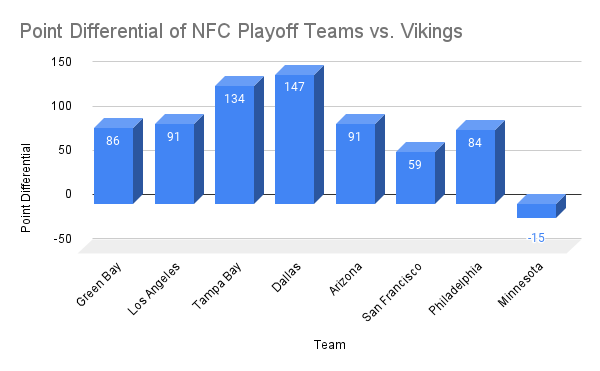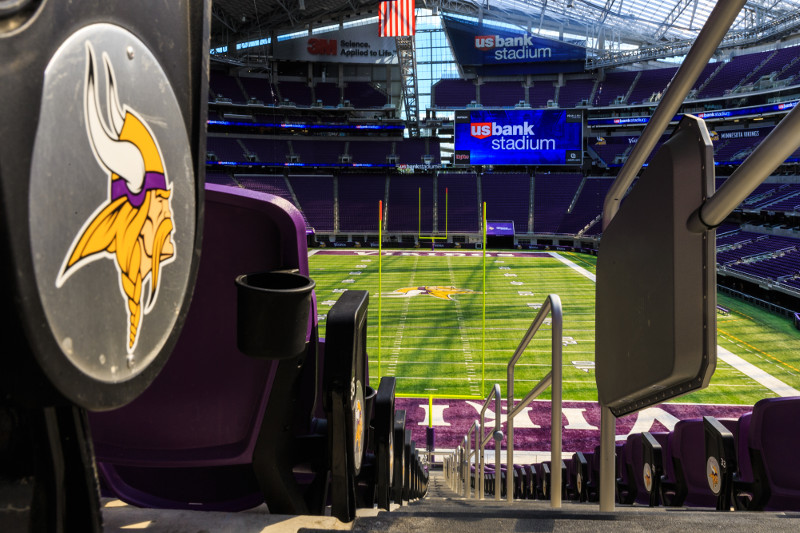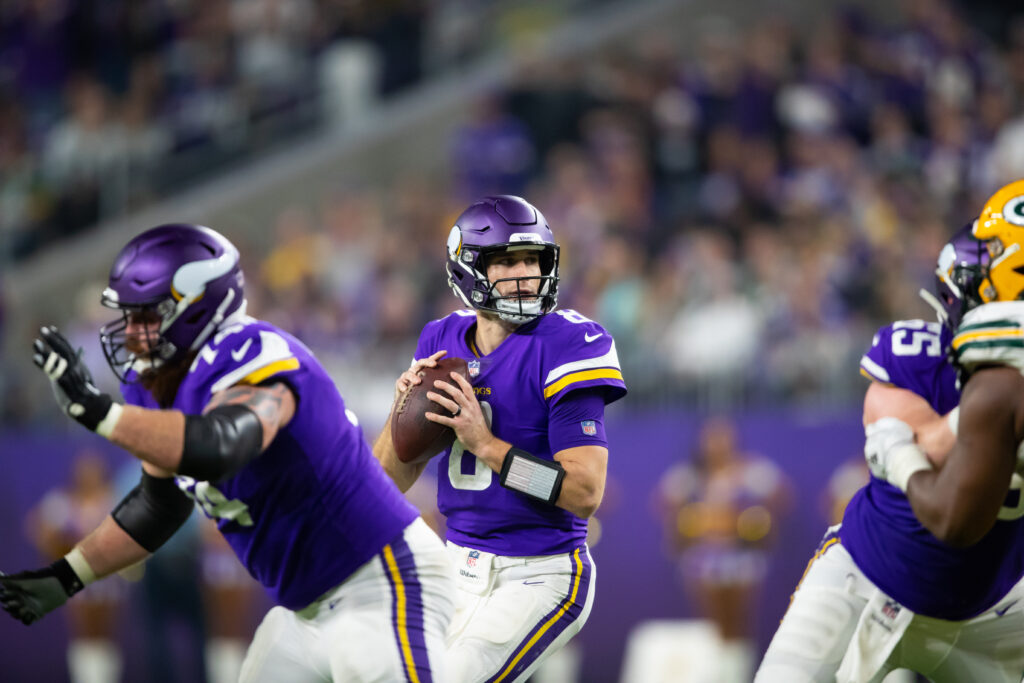A straightforward question was posed to Mike Zimmer during Monday’s press conference: Why did the Minnesota Vikings miss the playoffs?
The Vikings’ head coach responded this way:
“We fumbled the ball in overtime against Cincinnati, we gave up a touchdown at the end of the game against Dallas, we missed a field goal against Arizona, we lost in overtime against Baltimore, we gave up a pass on the last play of the game against Detroit,” Zimmer said. “So those are critical things that happened throughout the course of the year. You hit half of those and you are in the playoffs. Every game comes down to it. It is what it is.”
Zimmer’s revisionist history doesn’t include a lot of the details of how the Vikings found themselves in those close games. Whether it was getting down two scores to Cincinnati, blowing a two-score lead in Arizona, Cooper Rush starting for Dallas, sitting on a two-score lead in Baltimore or getting down 20-6 to Detroit in the first half, the Vikings had chances to avoid being in those positions.
The tight games also cut both ways. They won on the final drive against Detroit, Carolina, Green Bay and Pittsburgh. Overall the Vikings went 6-8 in one-score games. That’s one win off an average rate. If the win-loss record was determined by which team in the one-score games put up more yardage, they’d be 7-7.
They got a 54-yard field goal from Greg Joseph to beat the Lions, a game-winning drive by Kirk Cousins versus the Panthers, a knockout punch fourth-down conversion in Los Angeles, a game-winning drive against Green Bay and a pass breakup in the end zone against the Steelers.
But the fact that they nearly split the tight games doesn’t quite satisfy the question of whether they were a deserving playoff team in a playoff-less team’s clothing. What do the bigger picture numbers tell us about the Vikings and whether they belonged in the postseason?
Let’s start with point differential.
Following the loss to Green Bay, the Vikings are minus-15 points on the year. There are nine NFC teams with better point differentials, including the 6-10 Seattle Seahawks, who play in the conference’s toughest division and were without their starting quarterback Russell Wilson for several weeks.
The Vikings’ Expected Win-Loss record per Pro-Football Reference is 7.6-8.4. The closest comparable teams to the Vikings in terms of point differential in the league are the Cleveland Browns, Miami Dolphins, Baltimore Ravens and Denver Broncos — none of which are playoff teams.
The average NFC playoff team’s point differential is plus-99. Quick math, that’s 114 points better than the Vikings.
Even if the Vikings flipped Monday night’s score and beat the Packers 37-10, they still would have been 87 points short of the nearest team that will be playing deep into January.
Let’s take that a level deeper and compare the rest of the playoff teams in some other key categories.
There are zero current NFC playoff teams who produced a lower offensive point total or scored points on a lower percentage of total drives. The playoff teams rank No. 1, 2, 9, 10, 11, 12 and 13th in points scored. The Vikings are just behind at 14th. They are just six points behind San Francisco but 85 points behind top-ranked Dallas.
Every NFC playoff team had a higher rate of yards per play. Six of the seven playoff teams were higher in Expected Points Added through the passing game (Philadelphia was lower). Every playoff team had a higher rushing EPA.
Cousins missing Sunday night’s game hurt the Vikings’ offensive statistics. However, five of the seven playoff teams’ quarterbacks have missed at least one game. It should be mentioned that the Vikings entered the game in Green Bay with a 7% chance to make the playoffs, per the NBC Sports broadcast. So it’s true that Cousins missed the game that would have kept them alive but their chances were basically turned to dust by that point.
On the defensive side, it’s a similar story. Zero NFC playoff teams have allowed more points or more yards per play or more passing yards, rushing yards or gave up a higher percentage of drives with points allowed. The Vikings gave up 64 more points than the worst NFC playoff defense and sit 81 points behind the best.

How about lady luck? How can we factor that into the equation?
In 2020, they Vikings were the worst kicking team in the NFL. That’s a bad break. But in 2021, they ranked 13th in field goal percentage and made the second most 50-plus yard field goals.
They were penalized a lot on offense, with the sixth most flags tossed their way. On defense, the refs only hit them with 91 penalties, 20th in the NFL.
On the injury front, Danielle Hunter’s absence was a tough blow. But the following starters were in for 10 or more games: Eric Kendricks, Harrison Smith, Dalvin Tomlinson, Anthony Barr, Patrick Peterson, Bashaud Breeland, Mackensie Alexander, DJ Wonnum, Xavier Woods. They also got 10-plus games out of role players Sheldon Richardson, Nick Vigil, Cam Dantzler and Armon Watts.
If Dalvin Cook plays against the Chicago Bears this week, he will have missed four games this year. In that case playing 13 total games would be only one off his pace from each of the last two years. The Vikings won in Week 3 over Seattle without him and posted 100 yards rushing versus Detroit with Cook out. It is possible that a better rushing effort might have been forged against the Rams with Cook in but he only gained 99 yards on 37 carries in games against the Bears and Packers with the offensive line struggling to create holes.
Overall, only four running backs got more handoffs than Cook and only three gained more yards. It’s hard to say that he didn’t provide them with the expected value.
Adam Thielen’s injury appeared to hinder the offense down the stretch. Though in relief, KJ Osborn caught 18 passes for 269 yards and four touchdowns, which is a 16-game pace of 58 catches 861 yards and 13 touchdowns. Thielen also played enough football to finish sixth in the NFL in touchdowns.
That’s not to say they had nothing go wrong. Everson Griffen is third on the team in QB pressures and only played nine games. Hunter is fourth and only appeared in seven games. In many cases, the Vikings’ injury replacements did not effectively fill the void.
We can lower the microscope even more on the Vikings by looking at the performances of the players on the roster using PFF’s positional grades. Here’s how the Vikings finished:
Overall: 17th
Offense: 13th
Defense: 19th
In comparison to the NFC playoff contenders, the Vikings graded slightly higher than Arizona on offense and lower than any playoff team on defense.
So while the manner in which the cookie crumbled on the 2021 season may have felt like the Vikings were only a few plays away from a playoff spot, their point differential, offensive and defensive statistics and combined individual grades are not reflective of a playoff team.
If you played out the season 1,000 times, there are probably a decent number of years in which they would have a few more things work out and make the playoffs but numbers suggest that they would not be a playoff team the majority of the time.
“We thought we had a good team, but we didn’t put it together, safety Xavier Woods said”
TO READ MORE FROM PURPLE INSIDER, SUBSCRIBE TO THE NEWSLETTER AT PURPLEINSIDER.SUBSTACK.COM










